Heading out the door? Read this article on the new Outside+ app available now on iOS devices for members! Download the app.
In Yoga Journal’s online course, Yoga for Inner Peace, Colleen Saidman Yee—acclaimed yoga teacher, fashion model, and the wife of yogi Rodney Yee—offered 3 yogic practices a week for 12 weeks to transform your body, mind, and heart and support YOU in your personal journey toward inner peace. Here, she discusses the importance of letting yourself feel sad, and demonstrates a sequence to release grief and other festering emotions.
The Importance of Feeling Sad
Roshi Joan Halifax, who has spent the last 45 years working with death and dying, says one of the biggest problems in our society today is unexpressed grief. We are so afraid to feel sad that we cover it up. Soon, we start to believe the masks that we put on, and who we really are gets buried deeper and deeper. The body knows what’s real and what isn’t. So if we continue to live this façade, human-to-human connection gets confusing, and we end up feeling isolated and misunderstood, rather than content and peaceful.
Mr. Iyengar said that if you don’t want your world to change, don’t step on your mat. It becomes so much more difficult to BS yourself and others once the practice is in your bones. You know when you’re lying, and it feels horrible. Again, the body knows more than the brain, and a yoga practice fosters that intimacy and ability to listen to the body. It becomes more and more difficult to ignore or cover up emotions. How many times have you rested in Savasana and cried for seemingly no reason? Maybe it’s relief from a lifetime of feeling the need to shut down.
See also Feel Happier: Poses for Depression & Anxiety
Ramanand Patel (my husband, Rodney Yee’s teacher) was just here teaching at my Yoga Shanti studio in Sag Harbor, New York. He talked about the importance of release, and said that the two main ways to let out festering emotions are laughing and crying. He pointed out that over our four days together, I would make a joke when things got sentimental or sad. On the last day, he looked me in the eyes and said, “You need to cry more.” Because I’ve been in front of the camera since I was 19 as a model, I learned how to shut down the tears. My eyes swell when I cry, and that makes my clients unhappy. So Ramanand nailed me and gave me permission to let go of my stoic façade. I took it on, and now I cry pretty much every day. I don’t look for things to cry about, but I no longer shut down the impulse (I’m watching the Olympics with tears streaming down my face as I write this). My tears are tears of sadness, empathy, and joy. My face and shoulder muscles have softened, and I’m better able to sit with not only my sadness, but other people’s sadness. Taking off my mask has given others permission to do the same. From here, real communication and connection can thrive.
When we conceal our emotions, we get stuck in protection mode. The following sequence begins with Sun Salutations to shake up the body in all directions in order to clear out the hardness. I recommend doing these postures without being rigid, even if that means not going all the way into each pose. Match your breath to the movements.
Slideshow: 12 Poses to Release Sadness
YOU WILL NEED A block and a blanket.
Upward Salute

Urdhva Hastasana
Stand in Mountain Pose at the front of your mat. Inhale, reaching your arms overhead to Upward Salute.
See also 5 Steps to Master Tadasana
Standing Forward Bend
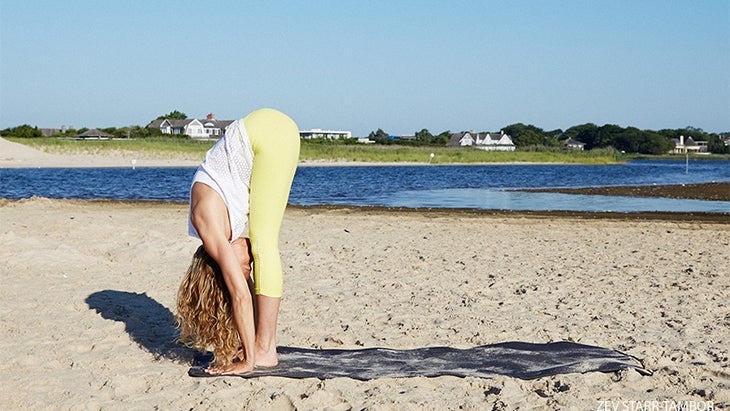
Uttanasana
Exhale, folding forward into a Standing Forward Bend.
See also 5 Steps to Mater Standing Forward Bend
High Lunge
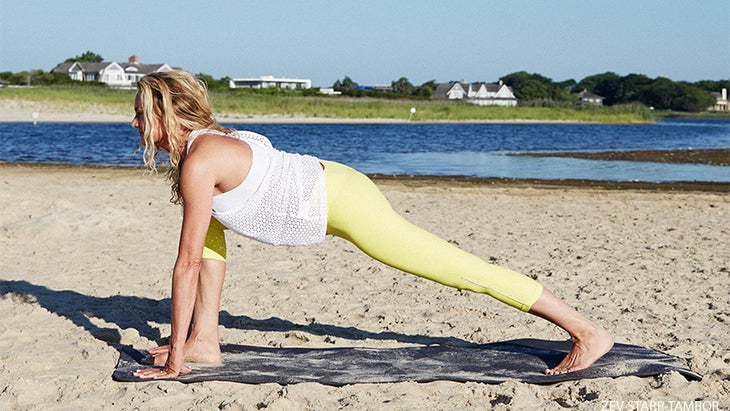
Inhale, step one foot back to a High Lunge.
See also High Lunge
Downward-Facing Dog
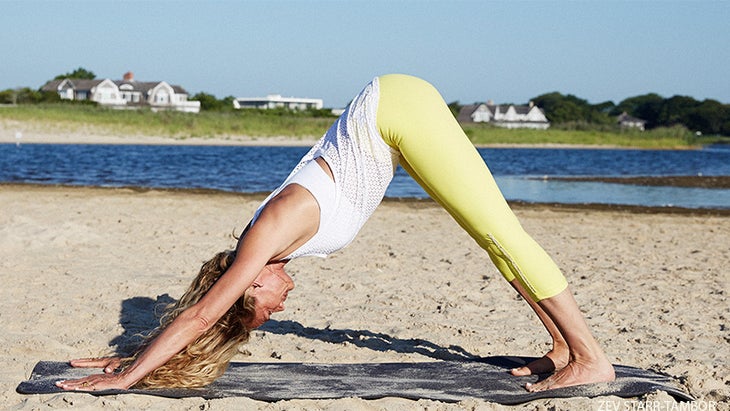
Adho Mukha Svanasana
Exhale, pull your hips back to Downward-Facing Dog.
See also Downward-Facing Dog
Plank

Inhale, come forward to Plank position.
See also DIY Plank Challenge: How Long Can You hold It?
Chaturanga
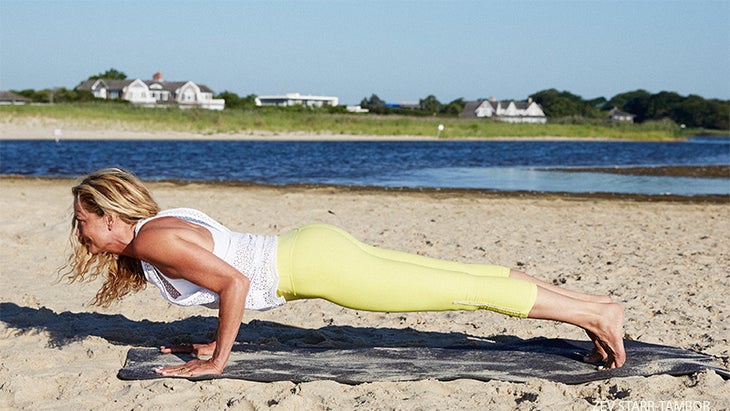
Exhale, bend your elbows to Chaturanga.
See also 7 Steps to Master Chaturanga Dandasana
Upward-Facing Dog
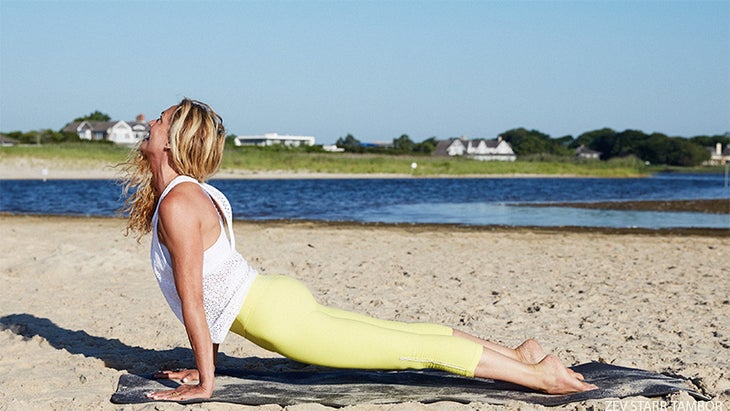
Inhale to Upward-Facing Dog by rolling to the tops of your feet; lift your thighs and move your chest, neck, and head forward and up. Then, pull your hips back to Downward-Facing Dog. Step or jump forward and repeat 3 to 5 times from Mountain Pose, alternating the leading foot.
See also Upward-Facing Dog Pose
Modified Child’s Pose
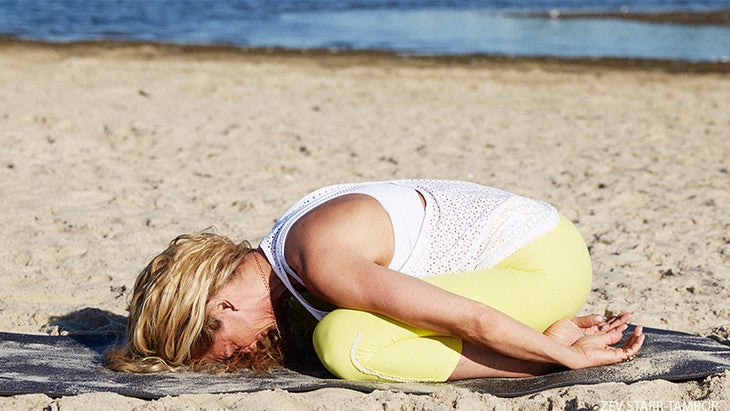
Modified Balasana
From Downward-Facing Dog, take your knees to the floor and rest your hips on your heels, with your arms alongside the body for more of a turning inward. You’re safe in this pose, not exposed. It’s important to open up slowly. When one is sad and in protection mode, you don’t want to use any force to open them up. You meet them where they are.
See also 4 Steps to Getting Into a Blissful Supported Child’s Pose
Constructive rest
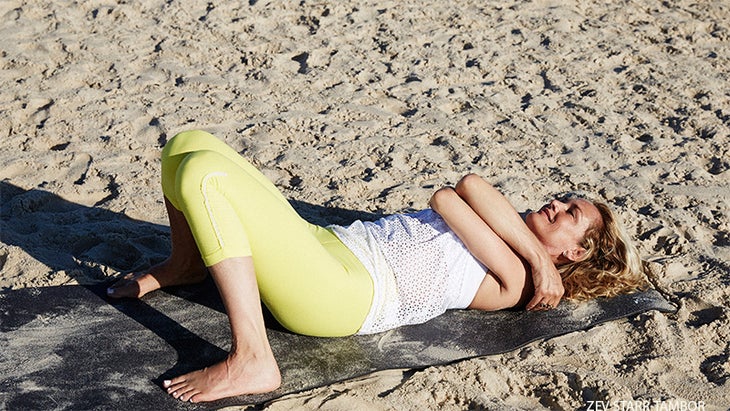
Lie down on your back, bend your knees, and rest them against each other. Take your arms across your body as if you were giving yourself a hug. This is considered a neutral pose, and I’m using it here as a transition into a backbend. Lying on your back, you’re a little more exposed, but the pose doesn’t have the vulnerability of a backbend, and you have your arms crossed in front of your body for extra comfort and protection.
See also Restorative Yoga
Restorative Fish Pose

Restorative Matsyasana
Roll up a blanket and place it horizontally across your mat. Lie down on the blanket so that it’s right under your shoulder blades. Your legs are straight and parallel as you press them into the ground. This is a restorative backbend, so you can relax with the opening it creates. This may let your sadness come to the surface as your whole front body is exposed and your heart is open. Allow yourself that tenderness.
See also Plug Into the Wall + Recharge: 4 Soothing Restorative Poses
Bridge Pose with block under sacrum
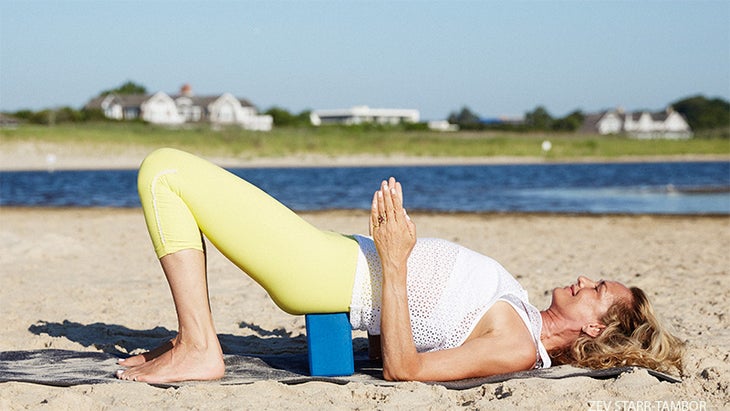
Setu Bandha Sarvangasana with a block under your sacrum
While lying on your back, bend your knees, lift your hips, and place a block at the lowest height under your sacrum. Let your belly rest completely. Bend your elbows and press the upper arms into the ground to keep the chest buoyant. This keeps the opening of the backbend, and creates Jalandhara Bandha, so there is a turning in, cooling, listening, and reflective quality.
See also Bridge Pose
Easy Pose
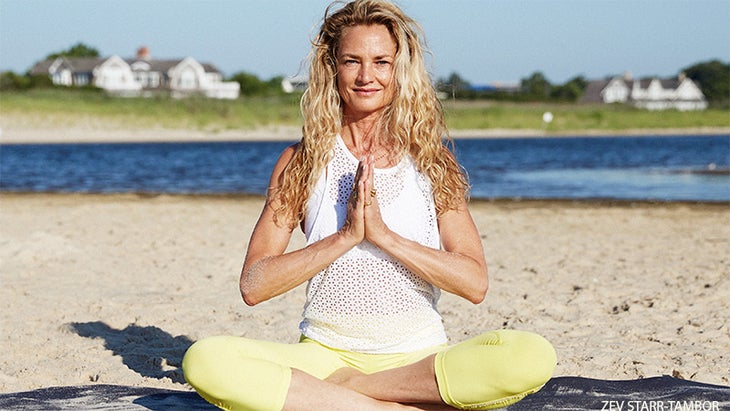
Sukhasana
Come to sit in Easy Pose and notice how you feel. If you’d like, bring your hands into Prayer. Notice any hardness in the body. Sit with it. Go inside it — there may be anger right under the surface. Breathe into that, and sit with it. Dig deeper, you may come across fear. Stay. Don’t bolt. Fear turns to sadness. Feel deeply. Breathe into that. Hold your sadness. Keep going deeper. Each layer becomes more tender, until you open into blue sky. Laugh. Cry. Feel. Love. Connect.
See also Sukhasana Isn’t All Easy
See also Yoga for Depression